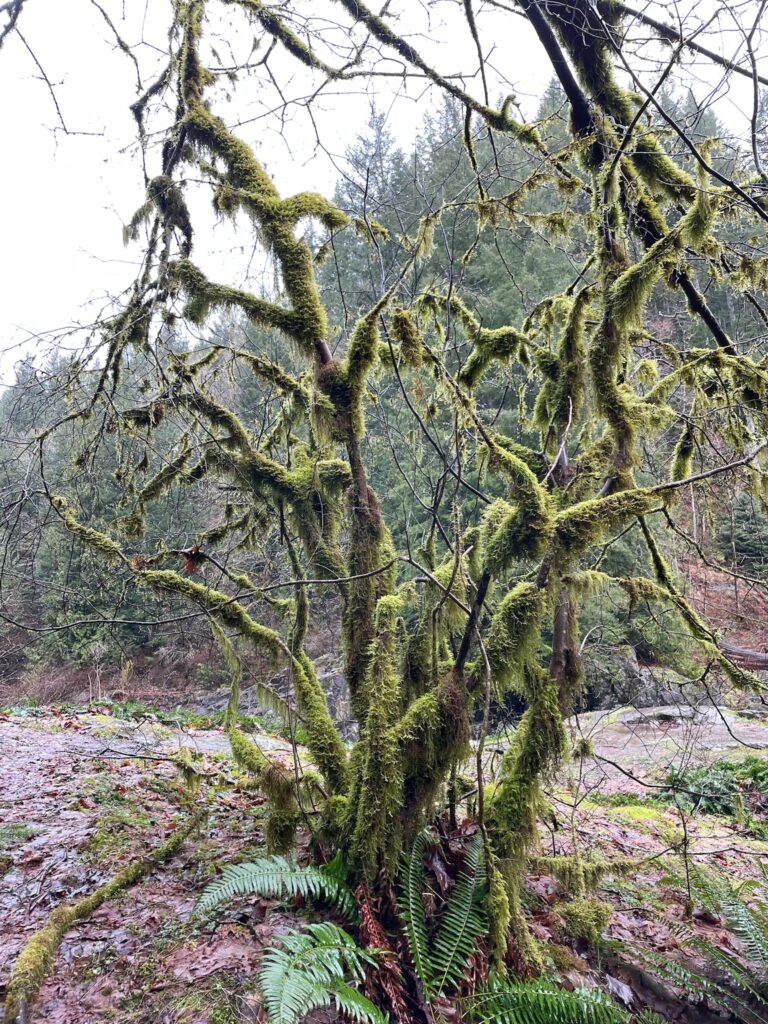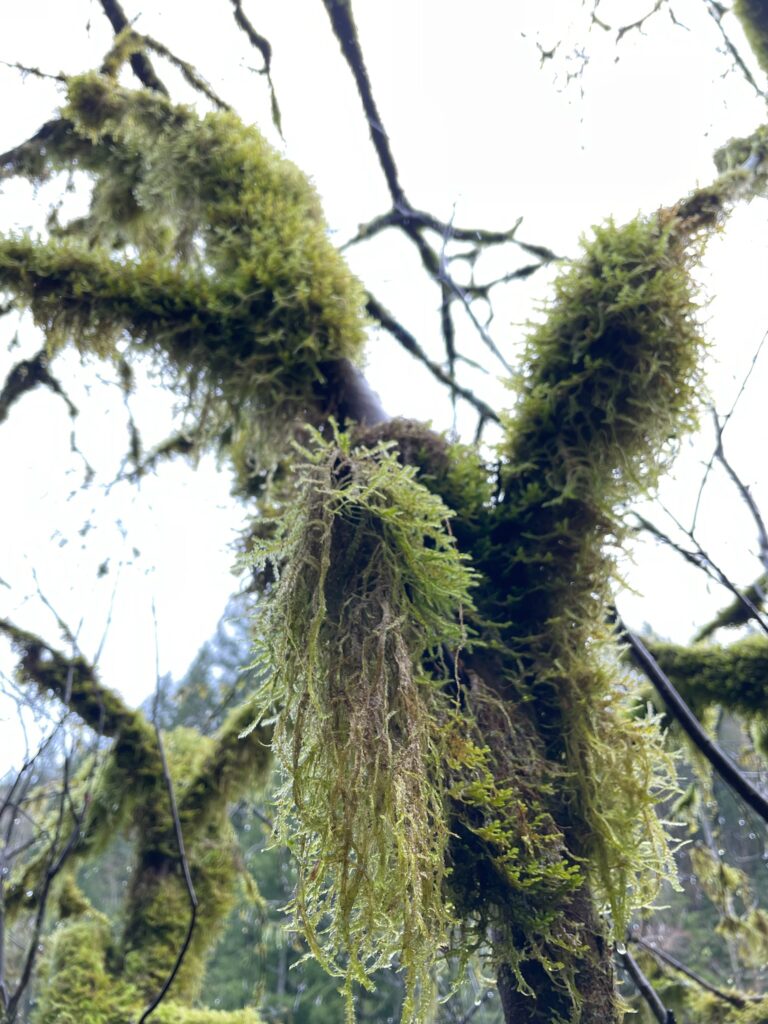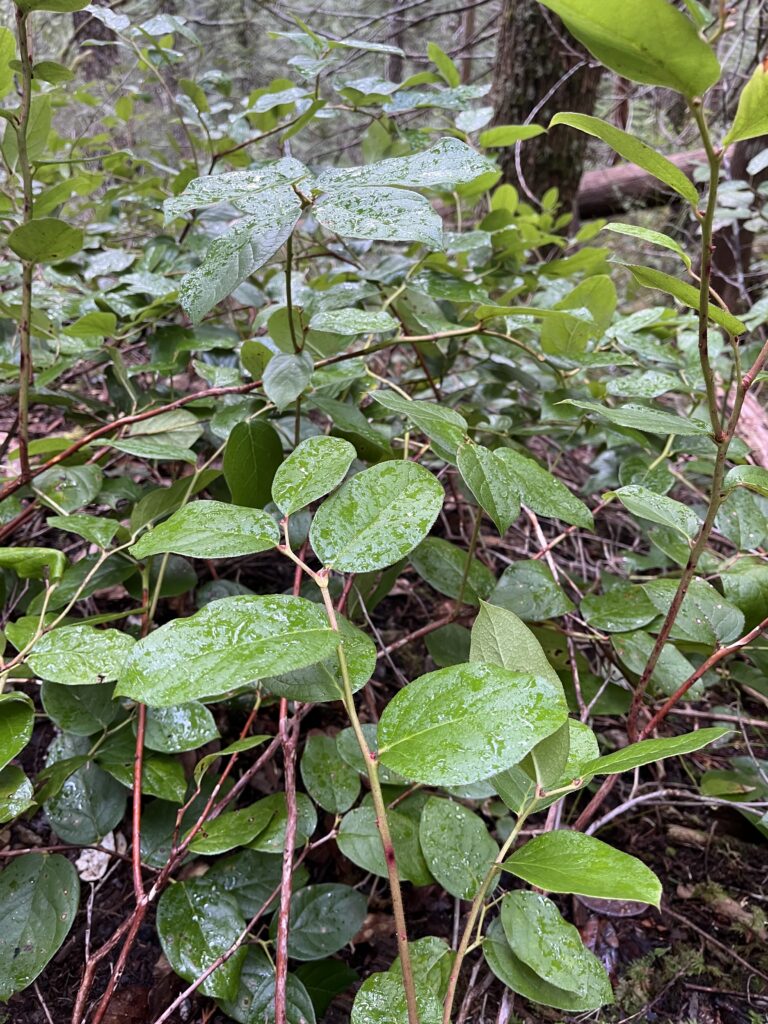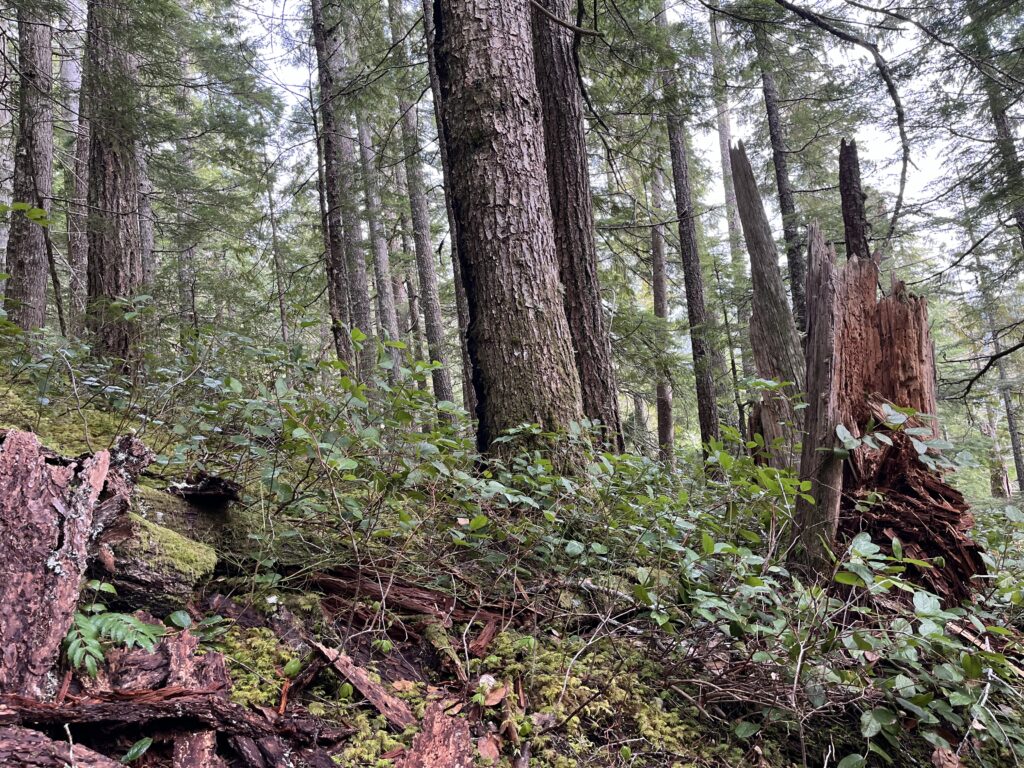If you’ve spent any time hiking around Vancouver Island, you’ve likely seen a variety of mosses growing on rock faces, plants, and trees. Significant areas of Vancouver Island are temperate rainforests with abundant rainfall, mild temperatures, and high humidity. These environmental conditions are perfect for the growth of moss.

Mosses in temperate rainforests provide crucial ecological services, enhancing the well-being of surrounding flora and ecosystems (OpenAI, 2024). Their remarkable ability to absorb and retain water helps regulate moisture levels in the soil, preventing rapid runoff and aiding in erosion control. Mosses contribute to soil structure and nutrient cycling by trapping organic matter and decomposing, releasing essential nutrients for plant growth. Acting as insulation, they regulate soil temperature, create microhabitats for diverse organisms, and stabilize the terrain, reducing the risk of landslides. Moss-covered branches contribute to canopy structure, providing additional microenvironments for epiphytic plants and animals. Overall, mosses play key roles in biodiversity support, carbon sequestration, and ecosystem health in temperate rainforest environments.

For people who have not experienced life on the island, the amount of moss that grows in and around the surrounding foliage can be quite entrancing. It appears as a thick blanket over many trees, yet it is quite difficult to differentiate one type of moss from another unless you know a lot about the plants/trees that surround it. Some mosses may contain toxins or other harmful substances, and the risk of contamination from pollutants, pesticides, or other environmental factors can make them unsafe for consumption. It is crucial to exercise extreme caution and consult with experts in botany or ethnobotany before attempting to eat any type of moss.

